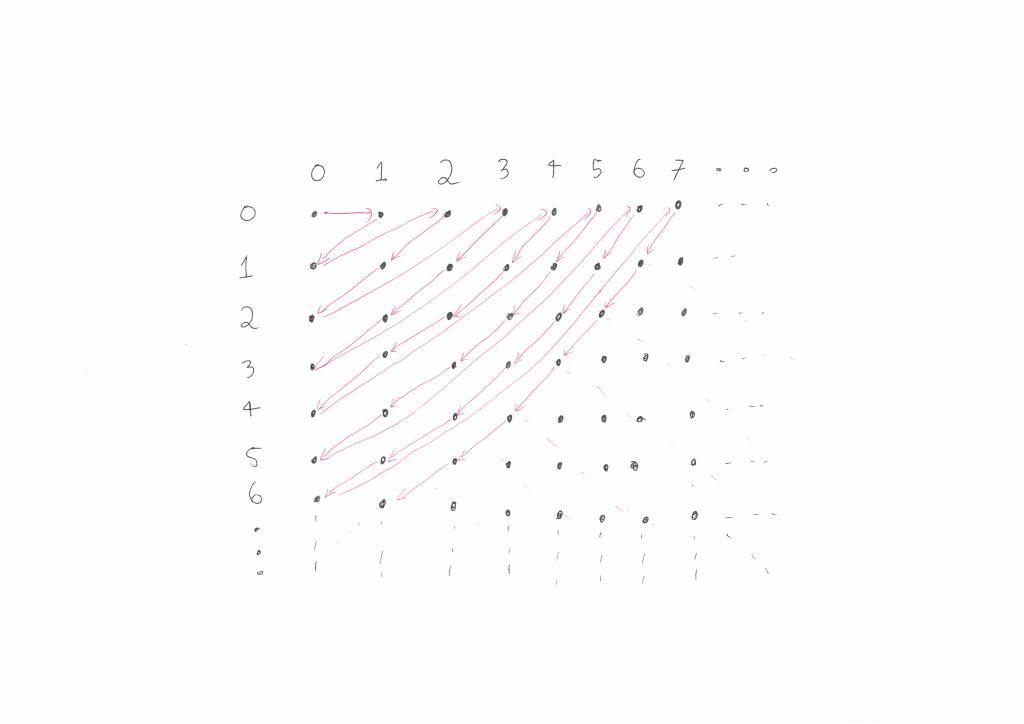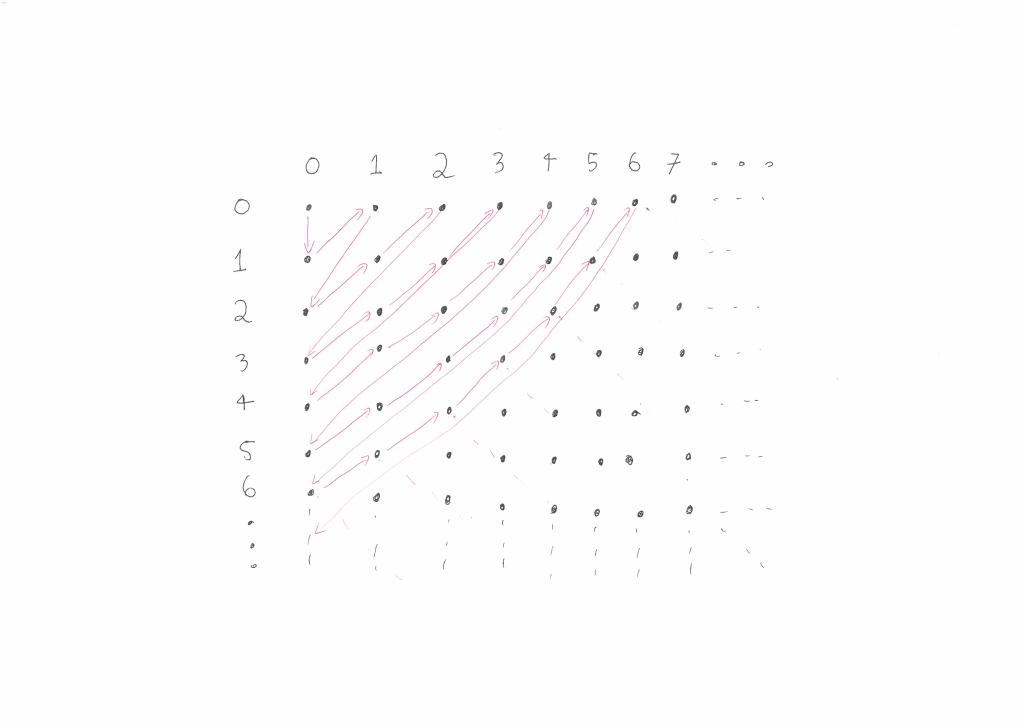One of the great results of the 19th century German mathematician Georg Cantor is that the sets and
have the same cardinality. That is the set of all non-negative integers
has the same size as the set of all pairs on non-negative integers
, or put less precisely “infinity times infinity equals infinity”.
Proving this result amounts to finding a bijection . We will call such a function a pairing function since it takes in two numbers and pairs them together to create a single number. An example of one such function is
This function is a bijection because every positive whole number can be written uniquely as the product of a power of two and an odd number. Such functions are of practical as well as theoretical interest. Computers use pairing functions to store matrices and higher dimensional arrays. The entries of the matrix are actually stored in a list. When the user gives two numbers corresponding to a matrix entry, the computer uses a pairing function to get just one number which gives the index of the corresponding entry in the list. Thus having efficiently computable pairing functions is of practical importance.
Representing Pairing Functions
Our previous example of a pairing function was given by a formula. Another way to define pairing functions is by first representing the set as a grid with an infinite number of rows and columns like so:

We can then represent a pairing function as a path through this grid that passes through each square exactly once. Here are two examples:
The way to go from one of these paths to a function from to
is as follows. Given as input a pair of integers
, first find the dot that
represents in the grid. Next count the number of backwards steps that need to be taken to get to the start of the path and then output this number.
We can also do the reverse of the above procedure. That is, given a pairing function , we can represent
as a path in the grid. This is done by starting at
and joining
to
. It’s a fun exercise to work out what the path corresponding to
looks like.
Cantor’s Pairing Function
The pairing function that Cantor used is not any of the ones we have seen so far. Cantor used a pairing function which we will call . When represented as a path, this is what
looks like:

Surprisingly there’s a simple formula that represents this pairing function which we will now derive. First note that if we are at a point
, then the value of
is
. This is because to get to
from
, we have to go along
diagonals which each increase in length.
Now let be an arbitrary pair of integers and let
. The above path first goes through
and then takes
steps to get to
. Thus
And so Cantor’s pairing function is actually a quadratic polynomial in two variables!
Other Polynomial Pairing Functions?
Whenever we have a pairing function , we can switch the order of the inputs and get a new pairing function
. That is the function
is given by
. When thinking of pairing functions as paths in a grid, this transformation amounts to reflecting the picture along the diagonal
.

Cantor’s function q 
The switched version of q
Thus there are at least two quadratic pairing functions, Cantor’s function and its switched cousin
. The Fueter–Pólya theorem states these two are actually the only quadratic pairing functions! In fact it is conjectured that these two quadratics are the only polynomial pairing functions but this is still an open question.
Thank you to Wikipedia!
I first learnt that the sets and
have the same cardinality in class a number of years ago. I only recently learnt about Cantor’s polynomial pairing function and the Fueter–Pólya theorem by stumbling across the Wikipedia page for pairing functions. Wikipedia is a great source for discovering new mathematics and for checking results. I use Wikipedia all the time. Many of these blog posts were initially inspired by Wikipedia entries.
Currently, Wikipedia is doing their annual fundraiser. If you are a frequent user of Wikipedia like me, I’d encourage you to join me in donating a couple of dollars to them: https://donate.wikimedia.org.


Fantastic work! Keep it up, you are an inspiration.
LikeLike
Thank you!
LikeLike